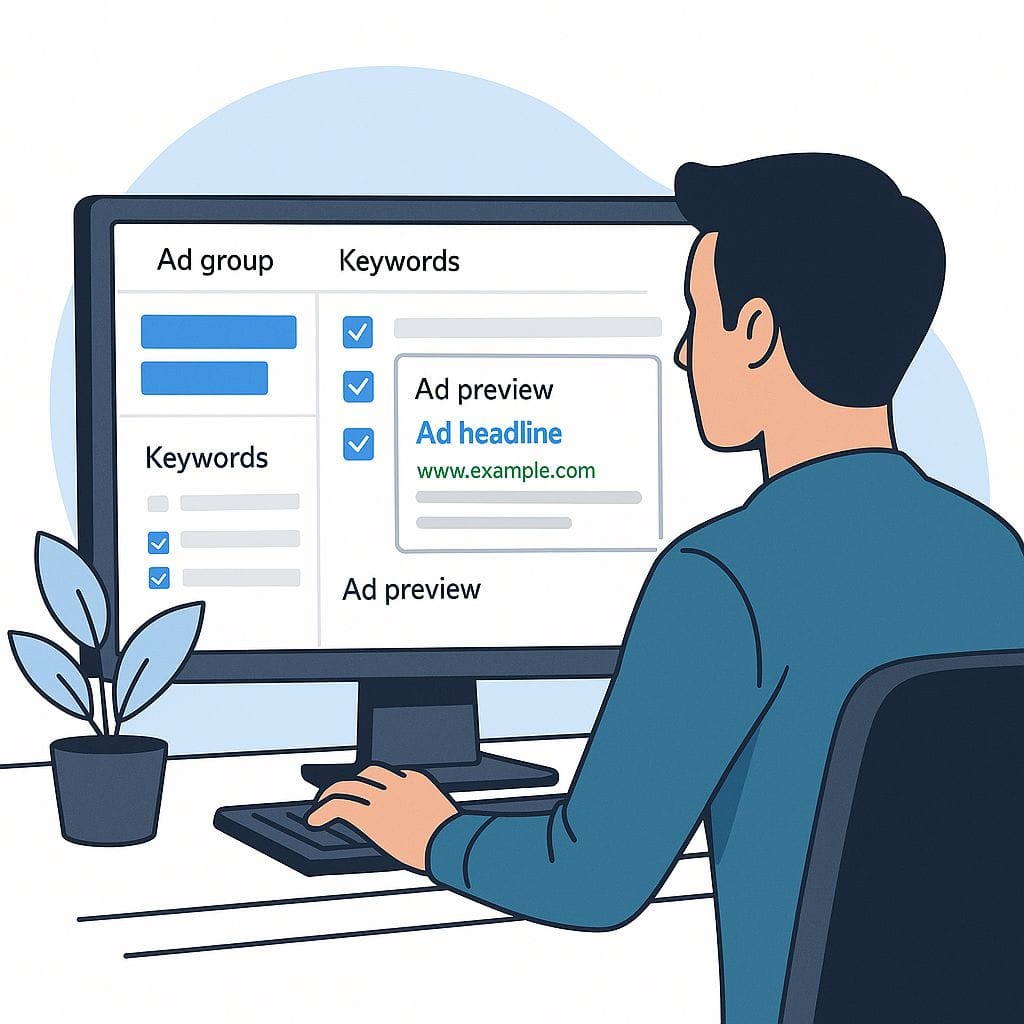Launch Your Google Ads Campaign the Right Way
Want to launch your first Google Ads campaign the right way in 2025? Most beginners fail because they skip essential setup steps or rely too heavily on automation without proper structure.
As a 22x Google Ads certified strategist, I’ve helped small business owners and service providers turn zero-click accounts into lead-generating machines.
Here’s my complete, step-by-step guide to launching your first high-performing Google Ads campaign.
What You Will Learn
Step 1 – Define a Clear Business Goal
Ask yourself:
- Do I want leads, sales, or website traffic?
- What’s a profitable cost per conversion (CPA)?
- What’s the lifetime value of a customer?
Your goal determines your campaign type, bidding strategy, and tracking setup before you launch your Google Ads campaign.
Step 2 – Choose the Right Campaign Type
For most first-timers looking to launch a Google Ads campaign, I recommend:
- Search Campaigns – Show ads on Google search results
- Optional: Add Call Campaigns for service-based businesses
Avoid Display or PMax for now—those require more data and audience strategy.
Step 3 – Do Intent-Focused Keyword Research
Use:
- Google Keyword Planner
- Google Search Console (if you have past site data)
- AnswerThePublic or Ubersuggest
Target high-intent, long-tail keywords like:
- “plumber near me”
- “buy standing desk online”
- “wedding photographer Chicago”
Avoid broad, vague, or one-word keywords.
Step 4 – Structure Campaigns for Clarity and Control
Organize like this:
- Campaign = Theme (e.g., “Plumbing Services”)
- Ad Group = Intent or Sub-Service (e.g., “Emergency Plumber”, “Water Heater Repair”)
Keep keywords tightly grouped per ad group so your ads are hyper-relevant.
Step 5 – Write Ad Copy That Converts
Follow this proven formula:
- Headline 1 = Use main keyword
- Headline 2 = Unique benefit or offer
- Headline 3 = CTA or trust signal
- Descriptions = Highlight pain points, benefits, and urgency
Example:
Headline: 24/7 Emergency Plumber | Licensed & Local Experts
Description: Fast service. Upfront pricing. Get your plumbing fixed today.
Step 6 – Add Ad Extensions
Extensions help increase CTR and provide more info. Always include:
- Callout Extensions (e.g., “No Hidden Fees”)
- Sitelinks (e.g., “Request a Quote”, “See Reviews”)
- Call Extensions for phone tracking
Step 7 – Set Smart Bidding & Budget
Start with:
- Manual CPC with Enhanced CPC (for learning)
- Budget = At least 10x your target CPA
Once you have data, shift to:
- Maximize Conversions or Target CPA
Step 8 – Track Conversions (Before You Launch!)
Use:
- Google Tag Manager for tracking
- Google Ads conversion actions (calls, forms, purchases)
- Enhanced conversions for more accuracy
If you can’t track conversions, you can’t optimize. Period.
Step 9 – Launch Your Google Ads Campaign & Optimize
After launching your Google Ads campaign:
- Let the campaign run for at least 7 days
- Check CTR, Quality Score, CPC, and conversions
- Pause poor performers and test new ad copy
- Add negative keywords weekly from your search terms report
Final Thought: Start Right, Grow Fast
Most beginners get overwhelmed with Google Ads because they skip strategy and structure.
With the right foundation, you can drive traffic, generate leads, and grow confidently. Launch your Google Ads campaign smart, and success will follow.

📅 Book a Free Campaign Setup Call
Need help launching your first campaign? I’ll do it for you—the right way.
🔍 Download My Google Ads Starter Checklist(Coming Soon)
Everything you need to set up your first campaign successfully.
🌐 uradspartner.com
About the Author
UR Ads Partner
✅ 22x Google Ads Certified
💼 PPC Strategist for Small Biz Growth
🌐 Helping First-Time Advertisers Get Results Ads Partner – 22x Google Ads Certified Specialist
Internal Links:
🔗 Services | Google Ads Strategy | Home
🌐 External Links Suggestions:
- Link to Google Keyword Planner
- Link to AnswerThePublic
- Link to Google Tag Manager Setup Guide
- Link to Google Ads Help Center

